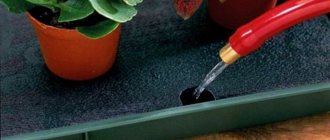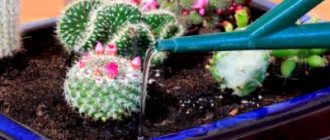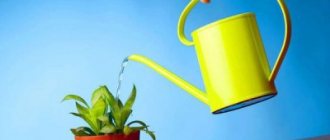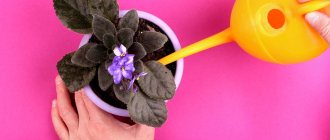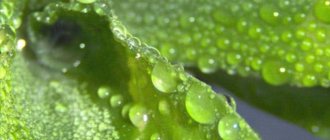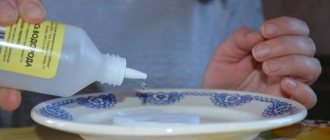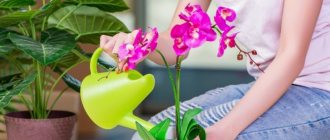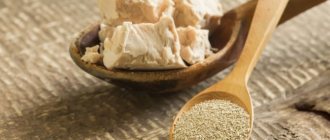What determines the water needs of home flowers?
The water need of plants depends on several factors:
- Visualization. Some plants require more moisture, others less. For example, orchids need to be watered every day because they grow naturally in rainforests. On the other hand, cacti and other succulents need to be watered no more than once every one to two weeks, as they grow in very dry climates.
- Temperature and humidity in the room. The drier and warmer the air in the room where the flowerpot is located, the more often it needs to be watered, as the water evaporates faster. If the room is cool and humid, you need to water less often.
- Substrate. Moisture retention depends on the type of substrate. For example, traditional soil without drainage retains it for a long time. And coconut substrate or drained soil will only last for a day or two.
Important: some flowers require changing types of watering depending on the season. As a rule, they require less intense humidity in winter. For example, this rule applies to cacti.
The choice of water for irrigation depending on the plants
Most indoor plants respond well to watering with soft water of a neutral or slightly acidic reaction, but some plants have special requirements for the composition and acidity of the water.
Heathers, rhododendrons, azaleas, fuchsias, monsteras, ferns prefer a medium acidic substrate. Pelargoniums, begonias, abutilon, tradescantia, and gerberas grow well in slightly acidic soil. To ensure that the acidity of the soil does not change and remains optimal for plants, water for irrigation must be acidified.
Neutral soil is suitable for most plants, so water for irrigation can simply be cleaned of hard salts.
Much less often on windowsills you can find plants that prefer slightly alkaline soils, for example, some types of lady's slipper. They can be watered with alkaline water with a high calcium content as they are calciphyles and grow naturally on chalk rocks.
Most plants can tolerate a certain concentration of salts, but epiphytes (bromeliads, orchids) require the most purified water, close to distilled.
When watering plants, regardless of their species, you should always give preference to soft water.
You can always find a way to help purify and soften tap water, because the life expectancy and decorative value of any indoor plant depends on it.
How to understand that a plant needs watering?
There are several ways to understand that a plant needs watering:
- By the appearance of the flower. Usually, with a lack of moisture, the leaves turn yellow and become limp.
- From the state of the base. To understand whether it is necessary to water, just touch the soil in the pot with your finger. If it is damp or slightly damp, no water is needed. If it is dry, watering is required.
- Soil moisture indicator. There are special devices that show the degree of moisture in the substrate, thanks to which you can easily understand whether watering is needed.
Important: yellowing or wilting of leaves can be caused not only by a lack of water, but also by its excess, as well as a lack of nitrogen or the presence of parasites.
The importance of water in plant life
Watering is vital for indoor flowers.
If there is a lack of water, nutrients from the soil do not dissolve and the plants wither and starve. Without water, the process of photosynthesis is inhibited, organic compounds are not formed, which leads to death.
With excess water, the permeability of the soil decreases, the root system begins to suffocate and often rots, which will also lead to death.
Therefore, it is necessary to select soil that is light, has good breathability and is fertile. Usually the main soil is mixed with sand, peat, compost. In addition, water acts as a temperature regulator, evaporating from the surface of the foliage. To avoid chilling the plants, water them with warm water.
How do soil moisture indicators work?
A soil moisture indicator is an inexpensive but very practical device that shows how much moisture the substrate contains. Costs from 100 to 300 rubles.
The indicator is used as follows:
- stuck several centimeters into the ground;
- follow his instructions;
- If the indicator shows that there is not enough moisture in the soil (usually it turns red), water the flower.
Important: Be very careful when installing the device in the ground. The fact is that during the procedure it is very easy to touch the roots, and this can cause disease or even death of the flower. The optimal solution is to place the device in the pot at the same time as planting. True, such an opportunity is not always available.
Watering indoor plants
During the year, flowers sequentially go through the stages of growth, flowering and dormancy, which occur in different seasons of the year. Most plants enter the flowering phase in the summer, so general recommendations are to increase watering during the spring and summer seasons and reduce it during the autumn and winter months.
in spring
From March or early April, potted crops are preparing for growth and active vegetation. In this regard, as daylight hours increase, they require increasingly intense watering. Its frequency and volume are increased gradually, while simultaneously starting to apply fertilizers containing nitrogen compounds.
The main condition is to let the soil dry out between waterings to avoid acidification of the soil.
In summer
During the warm season, crops bloom intensively, evaporate moisture through their pores, and require frequent and abundant watering.
The hotter the day, the greater the plants' need for moisture.
On cloudy and rainy days, the volume and frequency of watering should be limited.
in autumn
During the autumn months, the ambient temperature decreases, solar radiation activity decreases, and the days become shorter. As a result, the flowers stop producing new shoots, begin to prepare for the dormant period and need less moisture.
In autumn, potted crops need to be watered less frequently. This will reduce the risk of overflow
in winter
In winter, the watering regime depends on the conditions and characteristics of the crop:
- Heat-loving plants that needed daily watering in the summer are irrigated three times less often. And the lower the temperature in the room, the sparser the watering should be.
- Cacti and begonias practically do not need watering in winter. In their pots, the soil should be moistened only when the soil dries out.
- Plants that bloom in winter should be watered at the same frequency as in summer.
To reduce the risk of overwatering for crops that begin their flowering phase in the winter months, the correct choice of pot, the presence of large drainage holes, the installation of a drainage layer and the use of structured light soil help.
How to water correctly according to the seasons?
Most types of plants are watered differently at different times of the year. Consider the basic rules of watering depending on the season.
Summer
In summer, most flowers require repeated watering. This is due not only to high air temperatures, but also to plant biorhythms. In summer, metabolic processes in their tissues accelerate, and moisture begins to evaporate more intensely from the stomata on the leaves.
Here are the basic rules for summer watering:
- You need to water as the substrate dries;
- most flowers are watered once every two to three days;
- Succulents are moistened once a week.
Winter
Reduce watering frequency at this time of year:
- for succulents - up to once every three to four weeks;
- for other species - up to once every three to four days;
- It is necessary to water taking into account the drying out of the soil and not to take too long pauses between wetting the substrate.
Autumn
In autumn it is necessary to water indoor plants somewhat less frequently than in winter, but somewhat more often than in summer. In this case, the frequency of humidification should be gradually reduced to the minimum used in winter. This will ensure a smooth transition of the flower to a new regime and relieve it of stress.
Spring
The same rules apply in the spring as in the fall. Only in this case, the frequency of fluid administration, on the contrary, gradually increases, bringing it to this summer. The main goal of this approach is the same - to prevent stress, as a result of which the flower can get sick.
What temperature is suitable water for irrigation?
The water temperature should be equal to room temperature, most importantly – not lower. Some plant species prefer it to be warm. For example, such water is used for the early flowering of hippeastrum, gloxinia, amaryllis, hydrangeas, and geraniums. But during rest, the moisture temperature should be slightly lower or identical to the air in the room. Watering with warm water during the dormant period is fraught with early resumption of growth, which may result in depletion and death of the plant.
Cold water has a bad effect on the well-being of indoor flowers. After such watering, the roots may rot, the buds may fall off, or they may dry out completely.
Orchids react to cold water by the appearance of depressed spots, and violets - by colorless leaves.
Do not start watering plants in a cold room with warm water. This can cause premature growth, leading to their death. It is used to stimulate growth by watering with hot water, the temperature of which is 45-50 degrees or higher. But this method is used by experienced gardeners and only for some types of plants.
Proper watering of indoor plants is the main factor for their development. That is why every lover of green spaces in an apartment should inquire in advance how to properly water flowers so that they delight with their beauty. And this can only happen if such aspects as quantity, quality, frequency and temperature are observed.
In the evening or in the morning?
It is best to water indoor plants in the evening rather than in the morning. This is due to the following reasons:
- In the morning, drops of water left on the stem and at the base of the roots can act as small magnifying glasses and intensify the sun's rays, which will burn the flower;
- due to the higher temperature in the morning, water from the substrate evaporates faster, and the plant may not have time to absorb it;
- In the evening, the roots better absorb liquid and nutrients.
Important: If it is winter or cloudy weather outside, watering can be done in the morning. This is due to the fact that in this case the flower does not receive sunlight and the air does not heat up much. Thus, the plant is not in danger.
What water is best to use?
Soft or medium-hard water is optimal for irrigation. Chlorinated tap water is not suitable. However, it can also be used as long as you protect it during the day first.
Various nutrients can be added to water, namely:
- store-bought liquid fertilizers;
- weakly brewed tea;
- weak sugar solution.
Important: fertilizers should be used sparingly and no more than once every two weeks. Otherwise, this can lead to disease or even death of the plant.
How to soften hard water for watering plants
HOW TO IMPROVE WATER FOR WATERING PLANTS? Bonus at the end!
You can water indoor flowers with water obtained outside the window: rain, river or melt. But in large cities it is not always possible to obtain water of proper purity. To get out of this situation, flower growers practice various methods of softening hard tap water.
- Advocacy. Days spent in an open container have a positive effect on water quality.
- The introduction of special additives that can affect the composition of the liquid. These include citric acid (1 tablespoon per 10 liters of water) or peat (add 100 g of peat to 10 liters of water, wrapped in a bag).
- Making a cleaning filter. Ordinary water is first passed through a layer of fabric lined with cotton wool and activated carbon.
- Cooling hot water. It is considered less harsh than cold water - when heated, some of the salts precipitate.
To definitely determine the degree of hardness of tap water, you can contact a special laboratory or use a purchased tester. Water that is harder than 10 mg equivalent per liter will need softening.
Watering methods
There are several main methods of watering:
- Traditional or improved. This method involves applying liquid directly to the base. At the same time, it is carefully poured in a thin stream into the root zone, trying not to erode the soil. After the moisture has thoroughly saturated the soil and settled in the pan, it is drained from there.
- Lower. This is necessary for some plants that do not like the contact of liquid with the stem and roots protruding from the substrate (for example, cyclomena or violets). This method involves placing the pot in a deep tray filled with water. When the soil is sufficiently saturated with liquid, the pot is returned to the main tray. Some manufacturers use only the main humidification tray.
- Dosed. It uses special devices that provide moisture in small doses. It’s good if the florist leaves home for a long time (for example, on vacation).
Methods for automatically watering flowers
Flowers that love water can be moistened during their long absence using automatic watering. To do this, the following methods are used that will answer the question of how to water flowers during vacation:
- wick;
- plastic bottles;
- pallet with expanded clay;
- plastic bags;
- medical droppers;
- hydrogel;
- mats;
- automatic pots;
- flasks for humidification;
- ready-made automatic watering systems.
Any of these methods must be tested first. This way you can choose the right portion of water that your flowering pet needs for good growth. Also carefully study all the advantages and methods of each method. For example, the greenhouse method of plastic bags with water can lead to mold and mildew, and hydrogel requires a complete replanting. The best way would be a ready-made auto system, but it is expensive.
Spraying rules
Here are a few simple rules that will help you avoid problems when spraying indoor flowers:
- do not spray the plants in the morning - drops of water can refract bright sunlight and burn the leaves;
- Don't apply too much moisture - everything is fine in moderation;
- for spraying, use only stabilized water;
- add nutrients to the spraying liquid (many people use simple hydrogen peroxide for this - 5-6 drops per liter of water is enough).
Important: If you don't have the opportunity to spray during the day or evening, simply remove the plants from a sunny windowsill and moisten them. This will protect them from negative consequences.
Is it possible to water flowers with serum?
Another unusual natural way of simultaneous watering and fertilizing is the use of whey. Fans of eco-procedures for caring for flowers have adopted this method. Acid whey contains many nutrients, including amino acids and potassium and phosphorus, which are especially important for flowers. In addition, this composition has an inhibitory effect on pests. You cannot use the serum in its pure form - it will change the composition of the soil too much. As in the case of beer, for watering it is diluted 10 times.
In addition to using the usual solution, additional additives can be added to it. Recipes for such fertilizers include:
- Iodine (1 drop per 1 liter) and ash are added to the whey solution.
- To 10 liters of solution add 0.5 kg of sugar and a pinch of yeast. The mixture is poured onto the mown grass.
For root watering, 1 part of the resulting fertilizer is diluted in 10 parts of water. When spraying, change the dosage using a solution in a ratio of 1:3. But such fertilizing is recommended to be used only during the period of active growth of plantings.
How to help flowers that are sensitive to lime?
Often tap water contains excess limestone, and even pouring it over does not help get rid of this substance. This has a detrimental effect on indoor plants - they begin to deteriorate or become sick.
There are several ways to avoid negative consequences:
- use bottled water from the store for irrigation;
- freeze tap water, then defrost and water the flowers;
- pass water through the filter;
- Use water only after boiling.
Important: water can be softened with regular baking soda. But in the case of irrigation liquid, this must be done very carefully - you can upset the acid-base balance of the soil and destroy the flower.
What to water with
Such a strange question, you might think, of course, with water! Yes, but on the Internet or from the advice of grandmothers you can learn about such strange and supposedly effective methods as using coffee or tea, sugar solution, yeast, or, even worse, “meat” water. Yes, the latter is enriched with nitrogen, but it also contains fat, which will then interfere with air exchange in the flower pot.
Tea or coffee may indeed perk up the flowers a little, but there is a high probability of midges appearing, the larvae of which will simply destroy the roots of the plants.
Therefore, in order not to harm your green pets, use plain water for watering, and not dubious solutions. If you want the flowers to grow well, buy good soil, replant the plants in it, and use aqueous solutions of mineral fertilizers purchased in special stores for watering.
